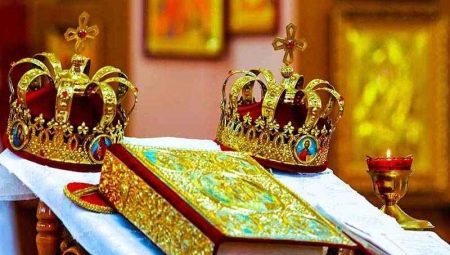Wedding is a very serious step and a great mystery in the life of a couple of loving people. Not many people decide to get married, because this process strengthens the hearts and destinies of two people not only on earth, but also in heaven.
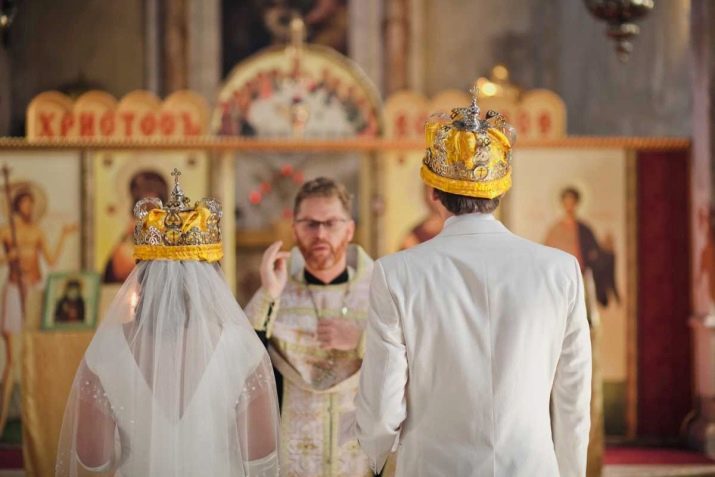
What it is?
A wedding is a church rite that is performed on or after the wedding day, several years later. A wedding means that God blesses a man and a woman for a peaceful life in love and understanding. The meaning of the name of the ritual lies in the fact that crowns are laid on the heads of the spouses, which are made of metal, often of precious stones.
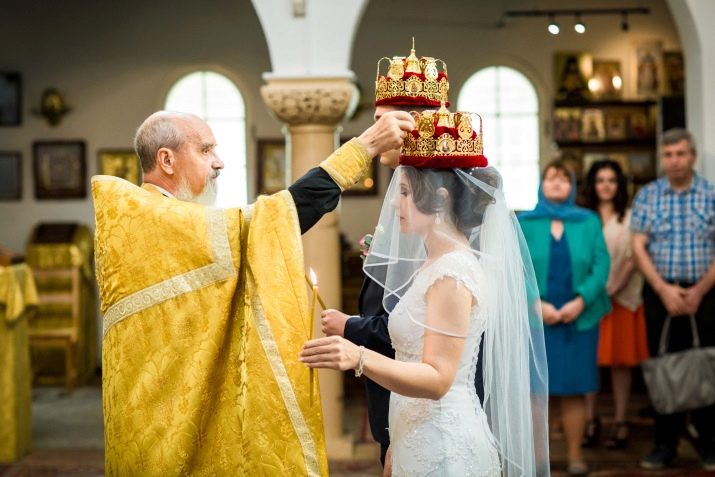
I must say that the wedding ceremony cannot be performed if the young people do not have a marriage certificate, which was officially registered at the registry office.
The meaning of the wedding for the Orthodox is to receive the blessing of the Lordas well as his protection for his family. No need to consider the wedding a formality. Also, this should not be some pathos event, the purpose of which is only one - to attract more eyes to your solemn event.
Each couple must know that they are not marrying for show and not for others. From this it follows that they are married only for themselves. Therefore, before going to church, you need to think carefully and weigh everything: do these two people need a wedding ceremony, and are they ready to go hand in hand through life.

Such questions sometimes put young people in a stupor, and this can only mean one thing - you should never rush. That is why many priests say that in middle-aged people who came to church for a blessing on marriage, there is no pathos and solemnity.They have only grace and acceptance of the fact that church marriage will make them even closer and more honest with each other.
The wedding is held only for Orthodox, baptized men and women. If they are not baptized, you need to wait a while with the wedding. To begin with, the priest advises to come to God through the rite of baptism and only then think about whether a person chooses this particular woman or this man for life. It must be remembered that the wedding ceremony is a combination of people forever, and the reverse procedure, in contrast to a divorce in the registry office, is no longer so easy. Not every priest will go for it.
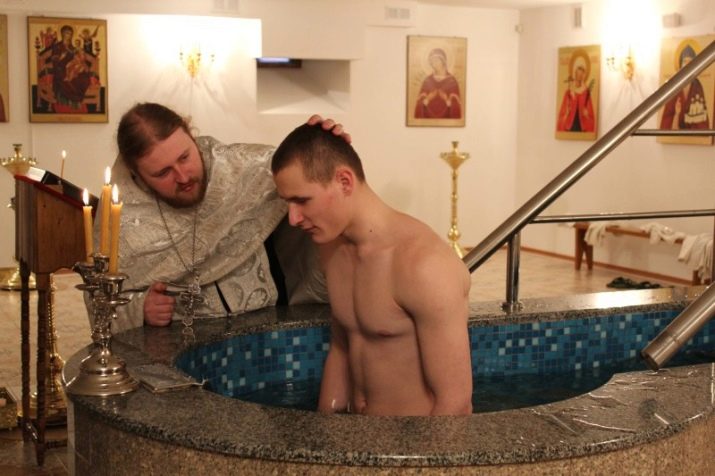
It is believed that the later the wedding ceremony, the more conscious this step. Therefore, do not rush into such a serious decision, and get married immediately on the wedding day with a person who is not always as familiar as we would like. After all, the real flaws in most cases open after marriage.
But if the young people just decided to get married, then the possibility of the ceremony is determined not only by the couple, but also the church, and she has a number of prohibitions. Wedding is prohibited in the following cases:
- young or one of the spouses is not baptized;
- in a previous marriage, the spouse was married, and no debunking procedure was carried out;
- some of the young have already had three official marriages;
- one of the spouses professes another religion;
- if possible, kinship in the third knee.
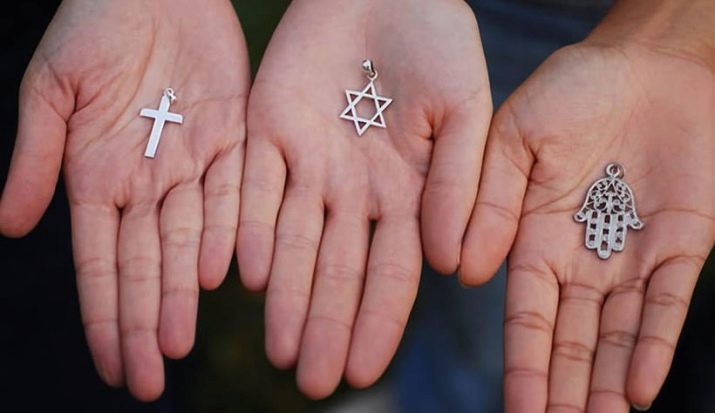
History of the sacrament
According to biblical writings, the first to marry before God were Adam and Eve. There is no clear description in the Old Testament, but everything indicates that there were two rites: the rite of betrothal and the wedding or wedding. Almost all believers had such a scenario: Jews, Greeks, Romans, and then, when Christianity came to Russian soil, this rite was carried out in Russia.
The New Testament describes church marriage very clearly when a combination of two people should be blessed by a bishop. From the 15th century, a priest began to be invited to the wedding, who read a prayer in order to bless the marriage. But later, these two events: the wedding and the feast, began to delimit, and to conduct the sacrament of the wedding exclusively in the church.
Tsarist Russia endowed church marriage with legal force. The wedding ceremony always took place with witnesses or guarantors. But it was not always so. Until the 17th century, Russia knew only about the wedding of the people. In those days, the care of the family was entrusted to the good spirits that were found in the forests. Therefore, during the marriage of the young, they drove around some bush and tree. Also, the Slavic rite included the bandaging of hands, the offering of a ring and other jewelry, the eating of one food or drink.
The wedding scenario before Peter I vaguely resembles a modern ceremony. Young people walked across the threshold of the church, holding on to a handkerchief, while blowing out candles. Just like now, they stood on a rushnyk in the middle of the room, the priest threw young scarves on the bound hands, and at that time they made a detour.
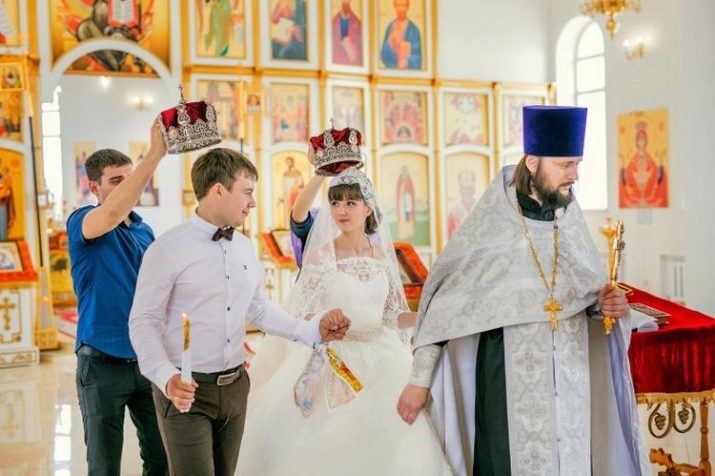
Well, after Peter I ordered to consider only that marriage legal that was concluded by the church, all Orthodox learned about the church marriage. The ceremony itself is not very different from the modern wedding ceremony. True, the presence of young parents is now permitted, while Peter I, under pain of terrible punishment, forbade parents to enter the church at the time the couple was married.
When describing wedding ceremonies in Russia of the 18th-19th centuries, it is worth paying attention to royal weddings. The decoration of the church during the wedding of tall persons was accomplished in an incredible way. The rich decoration of the temples, the splendor of luxury and the clothes of the priests made me think that the kings were competing with God. The road from the house to the temple was covered with a carpet of all kinds of flowers, and at the time of the wedding the servant was already decorating the motorcade with shiny ribbons, bells and wildflowers.
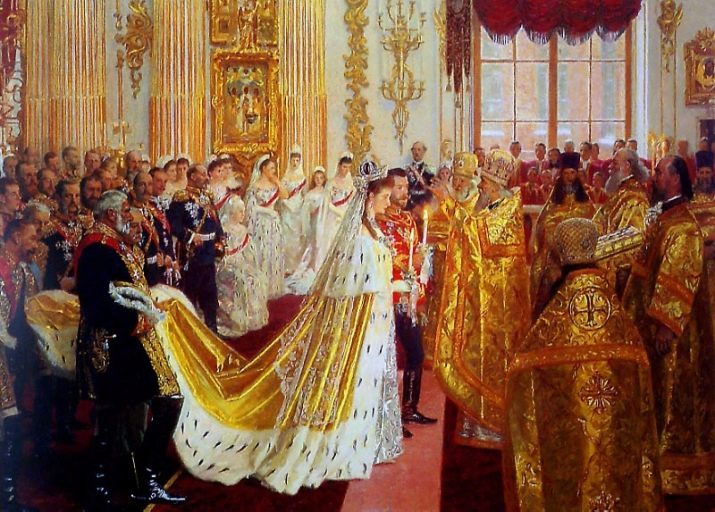
During the advent of Soviet power, registration of the official marriage was undertaken by the registry office.The church rite began to be forgotten, but he was not recognized by the state and was persecuted. People who entered into church marriages were fired from organizations, expelled from the Komsomol. There were very few believers, as well as those who wanted to get married, and even if the wedding ceremony was carried out, the family kept this information secret in order to exclude negativity in their direction and towards their children brought up by Soviet teachers.
After the collapse of the USSR, the state again turned to the church face. Sunday services, communion trips, and the baptism of the child began to revive. The wedding ceremony again became something high and holy for the Russians. Weddings in modern Russia took their place in Russian families. Newlyweds more and more often want to not only register their marriage in official bodies, but also ask the Lord to combine them with a holy church marriage, which cannot be destroyed by anyone or anything.
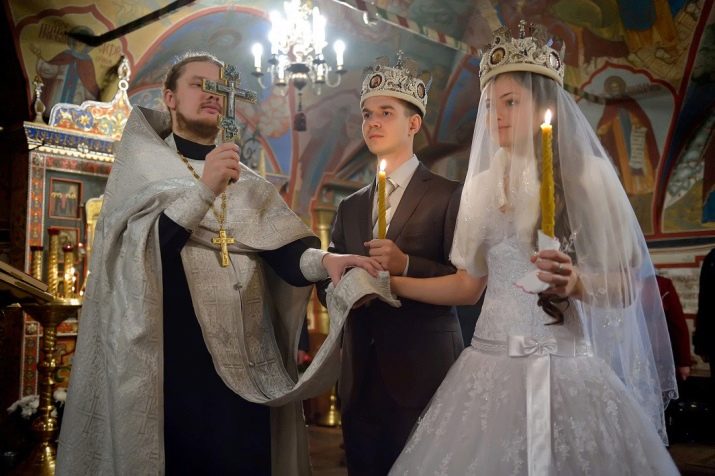
How many times can I get married?
Of course, the wedding process itself should be carried out only once and for a lifetime. But there are times when they carry out the ritual of debunking, but for this something very serious must happen. In this case, the excuse that the husband and wife are tired of each other, do not fit. A serious reason for debunking may be betrayal of the spouse.

The church does not approve and does not support the decision to debunk, because it considers the wedding ritual thoughtful and informed by both spouses. But now, young people perceive this rite as something stylish and thematic, but not serious at all. Young do not think in advance why this is so necessary for the spouses. Therefore, when deciding on the possibility of a wedding, it should be discussed with both parents and the priest.
It often happens when a young couple comes for an interview for a wedding ceremony and then leaves, abandoning him. And this is right, because it is better to conclude a church marriage when a person is tested by time and God.
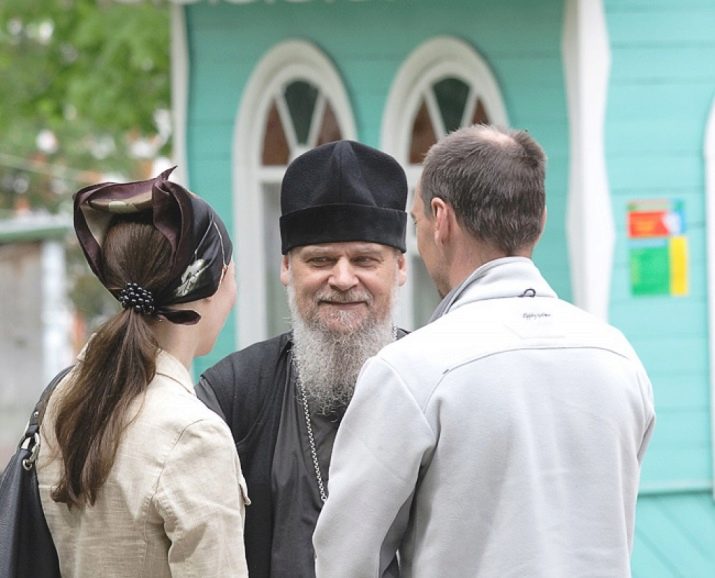
Permission to re-wedding is granted only by the ruling bishop. He can resolve this if he sees that a person is weak and cannot restrain his carnal desires. Repeated weddings are also allowed for people who are divorced not of their own free will, and widowers left with a small child. A second wedding excommunicates the parishioner from the sacrament for 2 years, and a third marriage excommunicates him for 5 years from the opportunity to take communion.
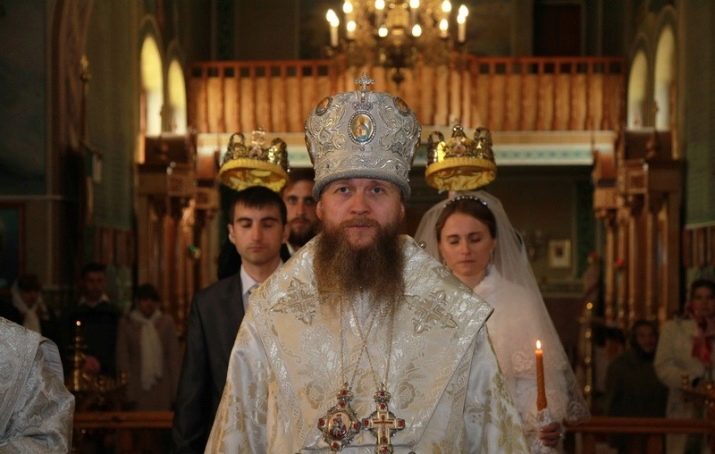
In the second marriage, the couple, in addition to prayers for a joyful event, will hear prayers and for repentance that they did not observe the norms of the church in the previous marriage. The third marriage is an exception to the rule and is only a reassurance of man's carnal desires.
In total, the number of weddings of one believer, an Orthodox person can not exceed three times in a lifetime. The fourth marriage is prohibited by all standards and canons of the church.
The church has long been deciding whether to wear crowns on the heads of the re-marriages or not. In the end, she still allowed to marry re-marrying. If the widower and widow are married, the crowns are held on their shoulders. The third marriage does not allow the use of crowns during the ceremony.
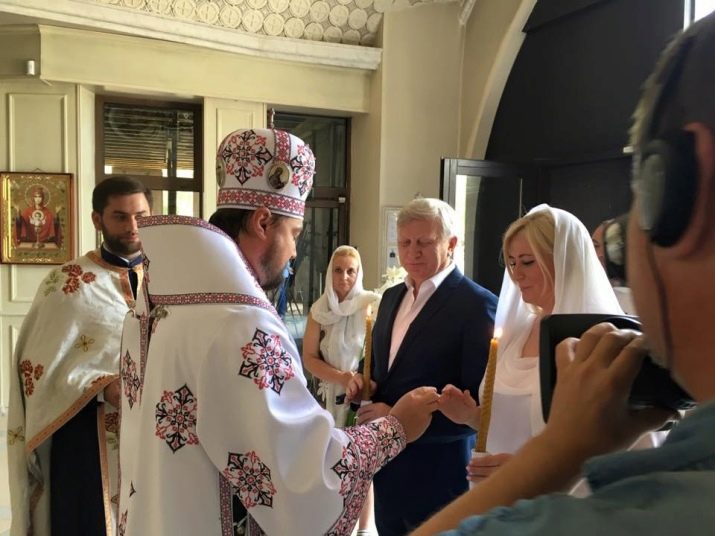
How to choose the time for the ceremony?
The young people choose the time of the year for the wedding. They must decide for themselves which season is best for them. There are many superstitions and will accept at this point, but if a person is superstitious, this entails the question of whether he is Orthodox. Therefore, you should not take the time to find the happiest day for the ceremony, since no horoscopes will help if the young are simply not ready for this serious step.
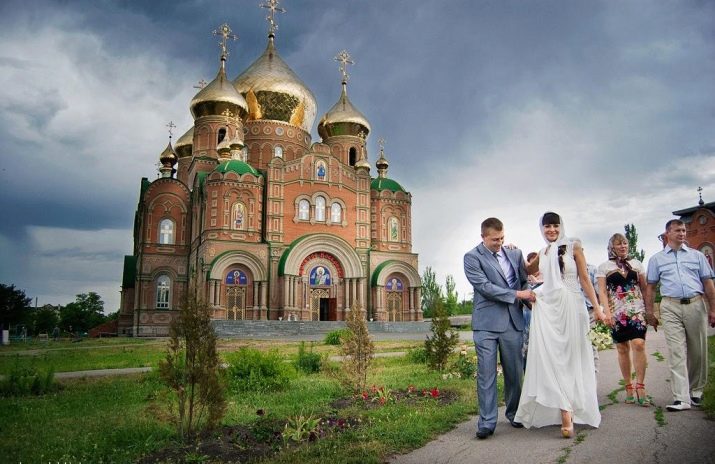
A woman, in particular, needs to guess the day when she will be “clean,” since entry to the church is forbidden during menstruation. As for this point, there are both those who disagree with the ban on entering the temple, and ardent opponents of a woman visiting the church during bleeding.
Nowadays, there are priests who allow women to stay in the temple during menstruation.They say that the woman is not to blame for this, and can not physically influence this process. In the church, ministers must first think about her soul, and also respect the desire of the spouses. Based on this argument, there should be no ban on the wedding ceremony if the young people have decided to fasten themselves together by the bonds of church marriage.
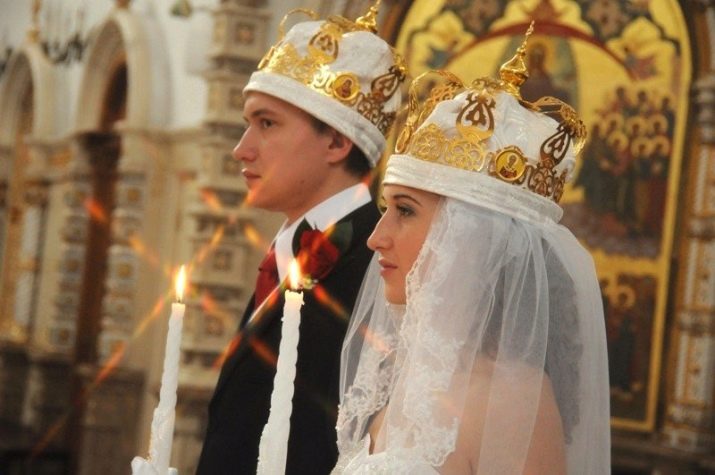
But most often, not all priests are so loyal, so you need to go to your priest and ask in person. In particular, this question may arise in a girl who finds it difficult to track her menstrual cycle and correctly set the time of the wedding at the moment when she will be “clean”.
As for the specific days of the week, you can choose any day except Tuesday, Thursday and Saturday. Usually the sacrament of wedding is performed after the Divine Liturgy, at around 11 o’clock in the afternoon. Fasting is also a ban on the wedding ceremony. For example, Christmas, Assumption and Great Lent.
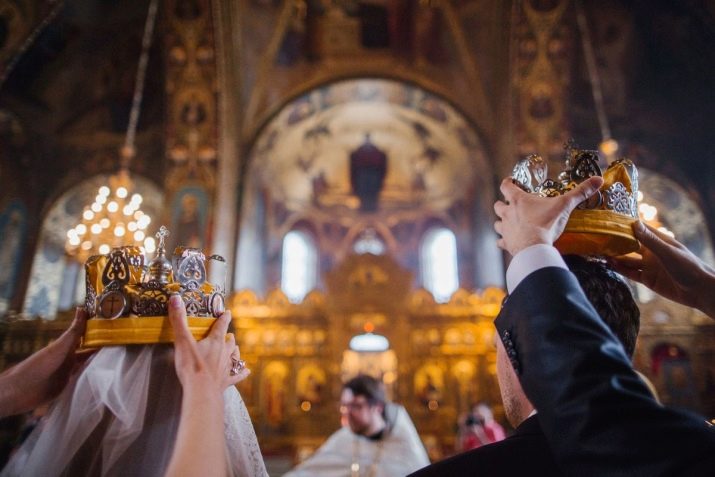
How to prepare?
First of all, you need to choose a church. To do this, you need to know what ceremony the young people want. You can choose a large beautiful temple and invite many guests. But if only young people and their assistants are present at the ceremony, then a small church is quite suitable. But, in general, it is worth traveling, seeing and feeling in which church it will be more comfortable for young people.

When choosing a church, you should also pay attention to the fact that the duration of the procedure is different. If we consider a metropolis, in which there are many beautiful temples, then you need to know that the influx of comers is always considerable. Therefore, if the young decided to get married in such a place, then perhaps there will be several couples during the wedding, and the procedure itself will take about 20 minutes, as the priest may miss some texts.
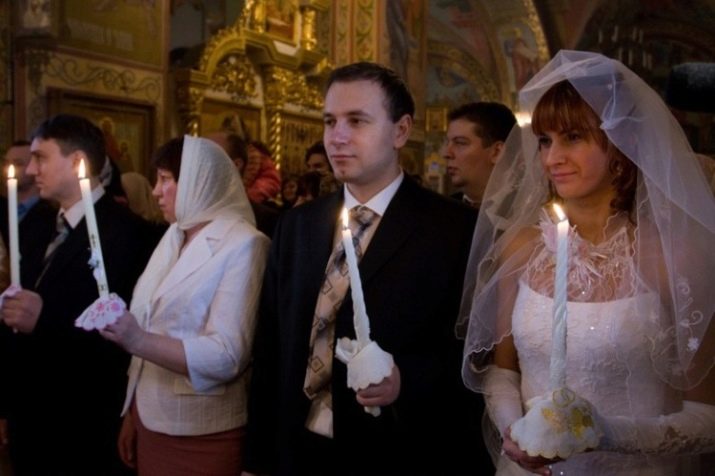
If this option does not suit you, you need to go out of town. There are fewer people there, and the script according to which the ceremony is carried out is the same, and even longer, of the order of 1.5 hours, since the priest will not rush and will do everything as befits a traditional Russian wedding ceremony.
Having chosen the date of the celebration, it is worth discussing it with the priest, and also find out from him about the cost of the service and the ability to take pictures and videos. Not all churches are allowed to take pictures or are allowed to do this only in certain places. Most often, the church does not have very good lighting, and therefore a photography specialist must arrive at the place in advance and pick up the necessary accessories for work to make the photos perfect.
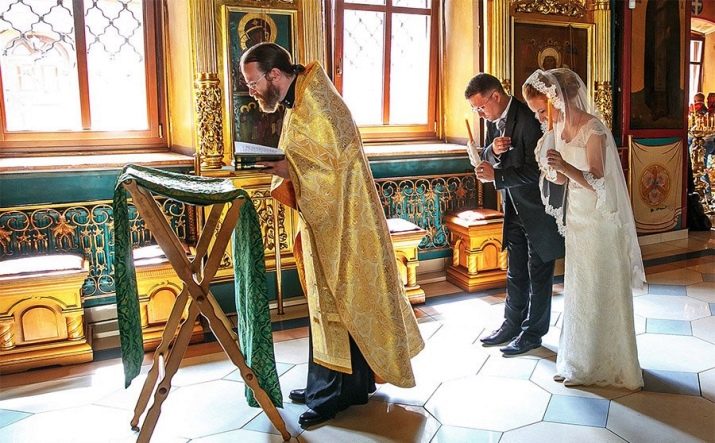
It is better for a couple if only she will be married on the day of the ceremony. The priest may say that this is just superstition, but still the presence of only one couple on this day is desirable.
The wedding rite of marriage implies a bell ring at the end of the rite, so you should agree on this with the priest. You can even make a donation to the church if the priest does not immediately agree. The bells notify the angels of the emergence of a new family, and they pray for the health and happiness of the family and unborn children.
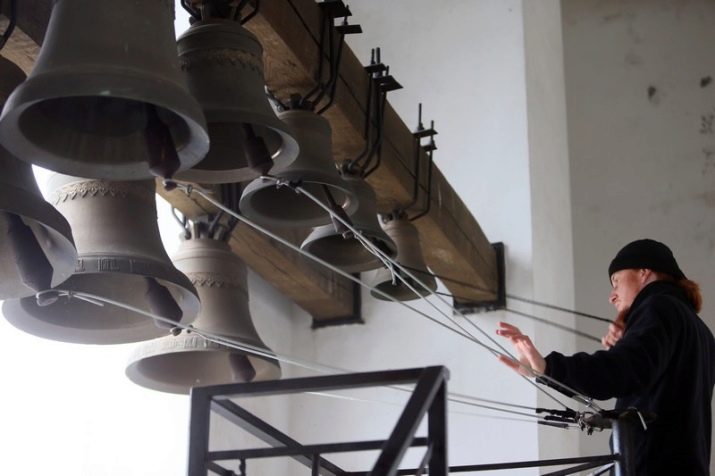
If the decision to marry does not leave the young, and by all means decide to fasten themselves together by the bonds of a church marriage, then they need to know how to properly prepare for this rite: what to bring with them and what to give to the priest on the eve of the celebration.
Witnesses are not a mandatory item. If the young people decided that they could not cope without help, then it is necessary to choose Orthodox baptized married people as guarantors.
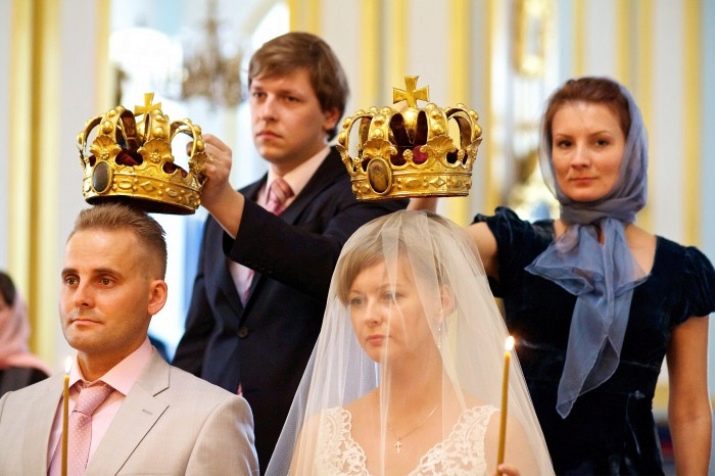
You also need to find out exactly what witnesses should do. If they keep crowns (and witnesses do not do this in all churches), then it will be necessary to choose a witness for themselves in growth, since holding a crown over a tall girl’s head will be very problematic for a woman of small stature.
A number of church prescriptions are also required.
- Communion is a mandatory procedure before the wedding. For this you need to fast for at least 3 days.
- 12 hours before the celebration, you can’t eat and drink.
- Before the sacrament, one must say prayers to Jesus Christ, the Mother of God and the Guardian Angel, as well as the follow-up. You can purchase a prayer book in the temple.
- Wedding rings - those that will be on the hands of the young, must be bought in advance, and on the eve of the wedding they must be given to the priest so that he blesses them.
- They also buy a rushnyk (embroidered towel), two tall white wedding candles, icons of the Mother of God and Savior, and even small scarfs under the candles for the ceremony to prevent wax from falling on the hands.
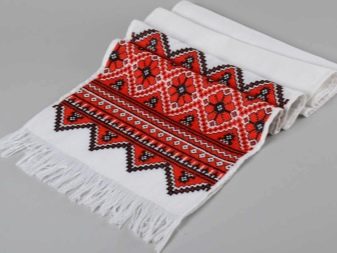

- Getting ready for the wedding can also rule out alcohol and cigarettes 12 hours before the event.
- Do not forget about the official marriage registration document in the registry office.

As for the rings, there are two versions to determine the choice of the metal from which they are made, and they absolutely contradict each other.
One of them says that the bridegroom wears a silver (in ancient times, it was completely iron) ring, and the bride - a gold one. The rings were a reminder: to the wife - about the sun-husband, and to the husband the silver ring with its silver luster reminded of a sedate moon, always following the sun. And the version that contradicts the first one is that the wife’s ring, on the contrary, should be of silver, and the husband of gold. This option of ring selection is explained by the fact that gold represents Christ, and silver - the purity of the church, as well as the purity and chastity of the wife. The choice of accessories always remains with the young.
Rings are chosen smooth and simple, so that the joint life of young people is smooth.
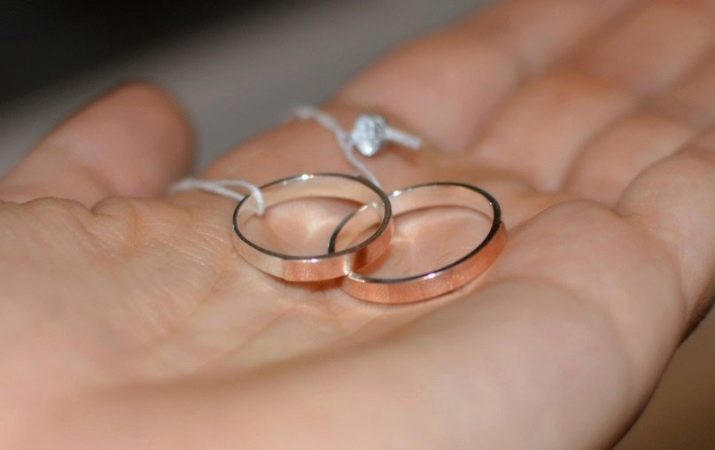
Outfit Features
For a church celebration, it is necessary to choose the right dress for the bride, as the image of the groom is understandable and standard. The only things that are not allowed for the male image are sneakers and jeans. In everything else - complete freedom of imagination, but the appearance of the groom must be appropriate and serious.
If the wedding and wedding take place on the same day, then those girls who choose an open dress with a deep neckline, bare back and shoulders for both ceremonies will be very unwise. This kind of absolutely not permissible for the bride in the church during the wedding. It is appropriate to not have a fluffy dress of a straight cut with sleeves on the elbow and not very high heels. The latter condition rather simplifies the bride’s stay in the church, rather than a requirement for her appearance. The time spent in the church during the wedding ceremony is 1 hour or longer, so standing in high heels for an hour will be very uncomfortable.
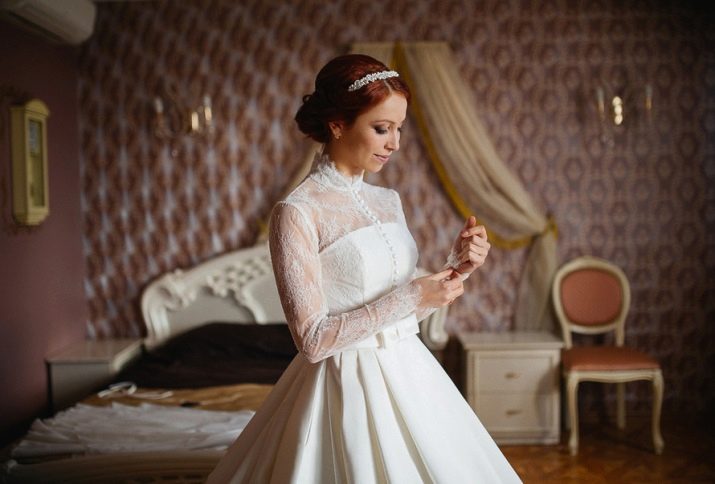
In connection with such requirements, these two events are desirable: a wedding and a wedding, not arranged on the same day, in order to comply with all the rules of the wedding and look dignified by participating in the ceremony.
During the procession, you can cover your head with a veil, but it is undesirable to cover your face with it, since the bride must be open before God. The color of the dress can be any, but the shade needs to be light and pale. White is an ideal option for a bride's dress. Regarding the jewelry, the rules do not say anything, but moderation and modesty are welcome.

Regarding the makeup of the bride, they say that he should also be quite restrained, and you need to consider that kissing the cross with lips painted with lipstick that gets dirty is impossible. It is worth in this case to choose cosmetics that leave no residue.
It should be noted that selling a wedding dress is by no means impossible. For storage, it is cleaned in a closet next to baptismal clothing. This dress can be worn in the office, if it is not too solemn. The wedding dress is sometimes left as a legacy to the daughter as a reminder of the parents, and that they lived in a blessed, Orthodox family. And of course, you can’t throw away the dress, cut it, as it should remain as a memory of a solemn day when the marriage of two hearts was gifted with the love of God.

Any woman takes care of her hairstyle, so before her performance it is worthwhile to find out from the priest whether the crowns are put on the heads of the couple.
If, in addition to young people, other guests will be present at the ceremony, then they should not forget about the rules that exist in the church. For example, for women it is not permissible to come to church in trousers. The heads of female guests should be covered. All attendees should have body crosses with them.
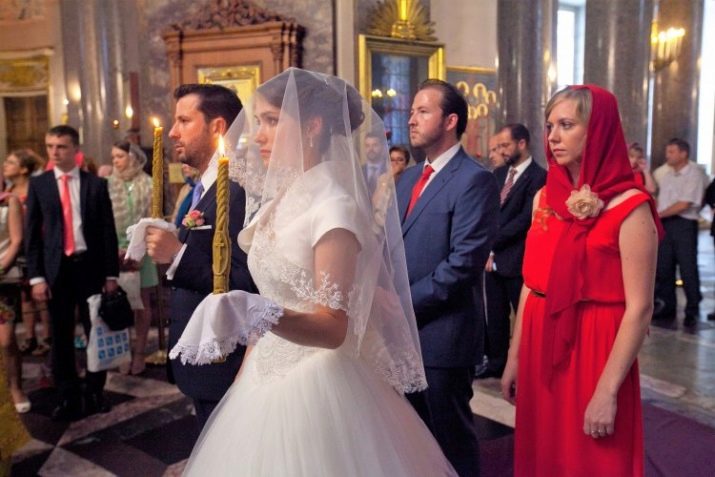
How is the rite?
Not everyone knows about the rules of the ceremony. Many spouses simply don’t see a reason to find out in advance what and what should follow, what prayers you need to know, when you need to be baptized, kiss an image or kiss it. Some do not even know how to be baptized. In this case, it is advised to initially read the relevant literature so as not to look silly during the wedding. But fortunately, only those who go to the church more than once, take communion, and confess.
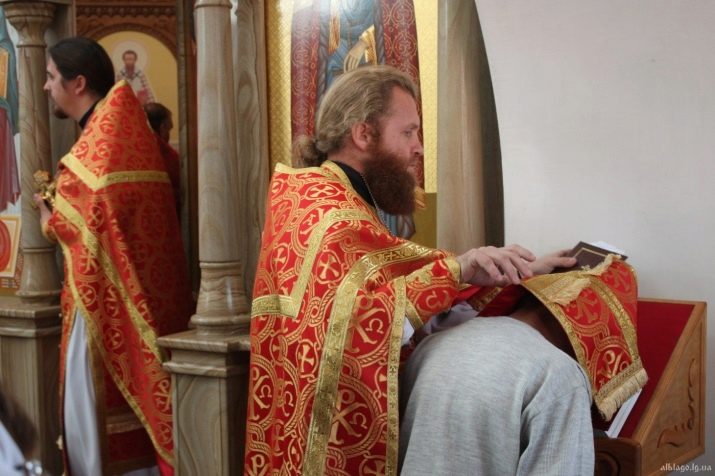
The church marriage ceremony itself consists of two stages: engagement and wedding. If the couple were baptized at birth with a different name, then it is worth informing the priest.
Betrothal is the moment a wife is accepted from the Lord’s hands by her husband. Introducing a couple into the temple, the priest by this action marks the beginning and birth of a new family. After the priest introduced a couple to the temple, he baptizes them and hands them lighted candles, which symbolize the ardent and strong love of the young for each other.
Next, the priest praises God, and then he prays for the young on behalf of each guest present in the temple. In prayers, he talks about the goal of marriage - procreation. The father also asks the Lord for the blessing of those who marry for good deeds.

Then they put rings on the fingers of the young — first on the husband’s finger, then on the wife’s. The ring is a symbol of the inextricable connection of two people, and it thus says that the union that is being made before God’s eyes between two people becomes inextricable. After the young change rings three times. So the husband’s ring remains on the wife’s finger. This means that throughout his life together, he undertakes to help his wife, support her and sacrifice everything for her. The wife’s ring on her husband’s finger speaks of her eternal obedience, immeasurable love and readiness to accept sacrifices.
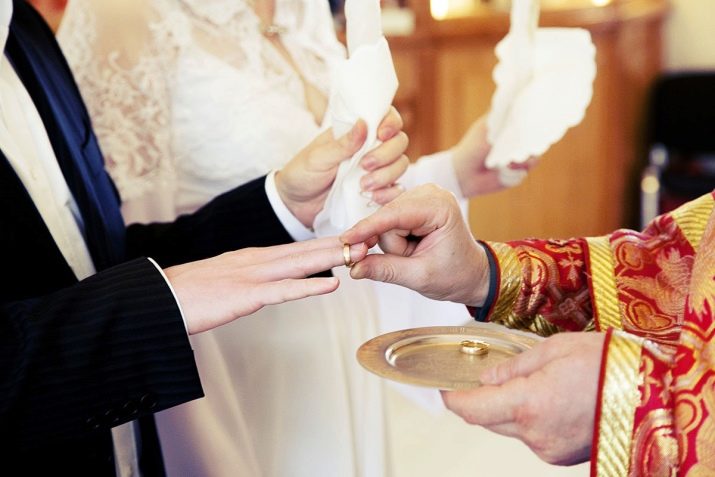
The next stage is the wedding. Young people are brought into the center of the temple, and they step on a rushnyk, spread out in front of the lectern. They express their consent to enter into church marriage. The spouses also confirm that they are not bound by any promises with outsiders, and after this condition is fulfilled, a natural marriage is considered to be concluded.
Then the marriage is sanctified by divine grace, and this action begins with the liturgy. The priest reads three prayers to God, in which he asks to bless the marriage, to give children to them.
After this comes the most solemn moment - the laying of crowns on the heads of young people. Having crossed the husband, the priest allows him to adhere to the image of Christ, and likewise the wife is applied to the image of the Mother of God on her crown. The priest three times asks the Lord himself to marry the young, and on behalf of God blesses the couple for marriage. This is the most solemn moment of the emergence of a new Christian family. Then the priest reads the Gospel, and then, together with the young and the guests, sings “Our Father”. After the priest gives a sip of wine three times, first to her husband and then to his wife.
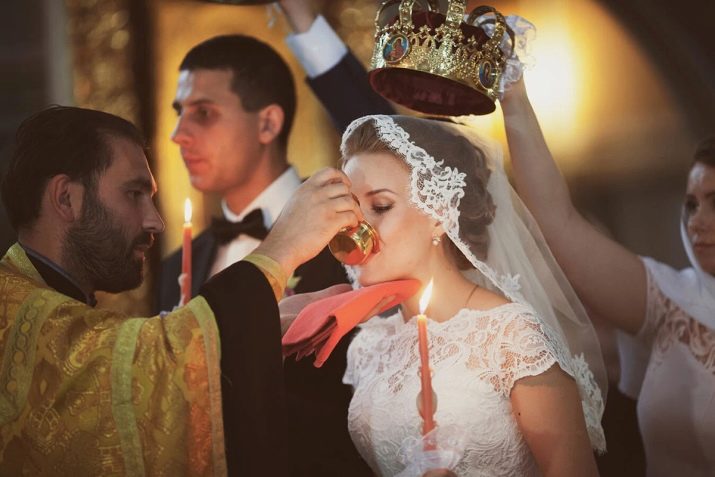
Then he joins the hands of the husband and wife, covering them with epitrachel and putting his hand, thus marking the transfer of the wife to the husband from the Church, which unites the young in Christ. Three times around the lectern is accompanied by the reading of three troparia about the glorification of Christ. This move marks the eternal move of young people in life hand in hand.
After prayers, the couple fastens their bond with a chaste kiss. Approaching the Royal Gates, the bride kisses the image of the Virgin, and the husband - the image of Christ. Then they change and apply to the images of the Mother of God and the Savior.
After the ceremony, young people usually go home or to their parents to celebrate a happy event for the family. It is important to maintain humility and meekness on this day, and therefore you should not call noisy companies, just 3-5 closest people with whom you want to share your joy on this day.
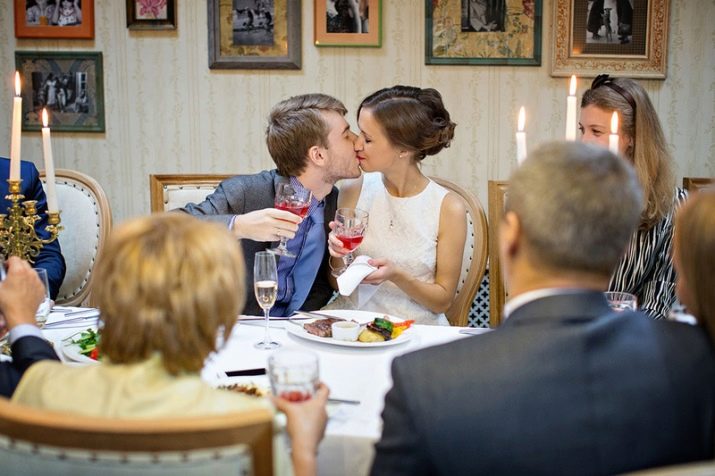
Signs and superstitions
Many couples, having decided to get married, begin to look for information about the signs associated with this sacrament. And they really are, since weddings are a very old custom, and over their long centuries-old history I have gathered a lot of beliefs around me. The priests are trying to explain to the young that in signs there is no meaning. Signs are baseless, mostly contrived, and are a product of people's imagination. Nevertheless, modern girls still believe in signs, try to observe them, and notice every little thing that may indicate the outcome of the wedding.
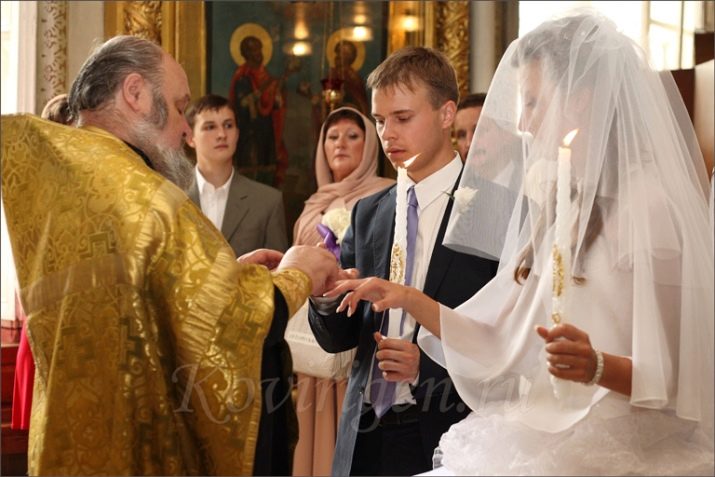
It is believed that the best time for a wedding is the last day of the first week after the end of Lent, or the so-called Red Hill. And this fact is quite controversial, since the Red Hill is actually a pagan holiday, and it has nothing to do with the church. It was celebrated by the Slavs as the end of spring and the birth of a new life.
At this time, young people met on a hill, sang songs and made acquaintances. In this regard, Red Hill is also symbolized with the birth of a new family. After that, it became believed that the wedding on this day marks a happy marriage and a long happy life for the couple.

Other wedding signs start from the threshold of the bride’s house.
- After the young people left for the temple, they washed the floor in the bride’s house so that she would no longer return to her parents.
- Hot stuffy weather is not the most favorable sign, which is why the couple considers the best time for a wedding to fall or spring.
- You can’t cross the road for a couple who is going to get married.
- In order for a couple to live happily married, you need to put an open lock on the threshold, and after the couple steps over it, close it, throw out the key, and leave the lock young.
- The couple needs to go healthy to the ceremony of church marriage, otherwise you can get married with your illnesses and not recover from them.
- If, before the wedding ceremony, an oath to each other in eternal love and fidelity, standing at the well, the marriage of the young will be unbreakable.
- You can’t call each other by name on the way to church, otherwise the couple will conflict a lot.
- Bad signs are weather factors. If a blizzard and a storm break out, it will be a bad omen, and the wedding will not go quite smoothly.

Many legends are also associated with the rings, and superstitions will also be accepted.
- From ancient times in Russia it was believed that rings should not be worn at all. The husband’s gold ring was deposited with his wife, and the wife’s silver ring was given to the husband.
- If there is a thread on the ring, then it’s to the bumps on the road of life, and the stones on the ring are tears.
- Only two people need to buy rings.
- You can’t buy rings in a hurry. They recommend taking care of the purchase at least a week before the event.
- Rings should be size to size, not small and not large. Remaking them to your size is highly discouraged, as well as using jewelry from your parents or relatives to make rings.
- For weddings do not use rings from past marriages.
- Wedding rings cannot be worn on gloves, so they must be removed before the ceremony.
- You can’t share the budget for the purchase of rings, and it is necessary that the husband buy both rings, so that there are no disagreements in the family.
- Rings should not be shown and measured to another person. Otherwise, one of the spouses will be a traitor.
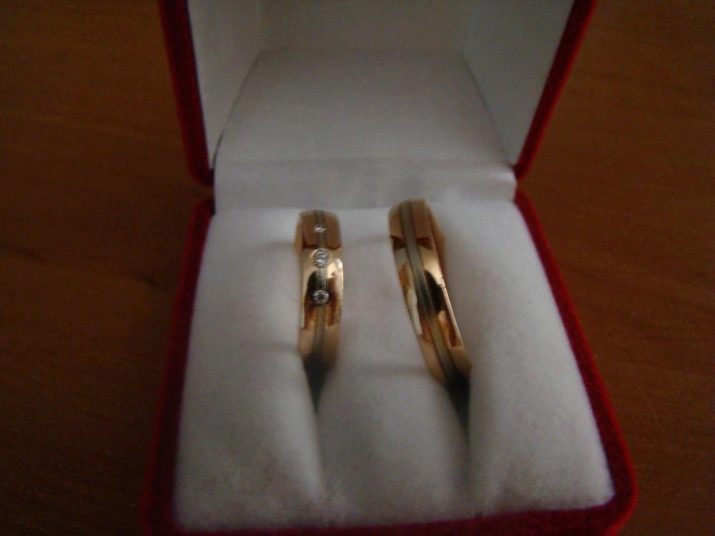
Superstitions touched not only the rings, but also the clothes of the young.
- If, on the eve of the wedding, a button or some element of clothing comes off the dress, then this is a disaster.
- On clothes young need to pin pins against the evil eye.
- You can not wear a wedding dress until the wedding - there will be no wedding.
- The bride’s wedding dress should be one-piece and not divided into a corset and a tutu or skirt. Observing this sign, the bride protects herself from divorce from her husband.
- On wedding clothes, the number of buttons should be even, otherwise the spouse will be unfaithful.
- Flowers in hair without a veil and other cover promise a quick breakup.
- You can’t come to the wedding ceremony in open-toed shoes.
- The wreath on the bride’s hair at the wedding ceremony looks very nice, but he won’t bring her happiness, she will quickly become lonely and unhappy.
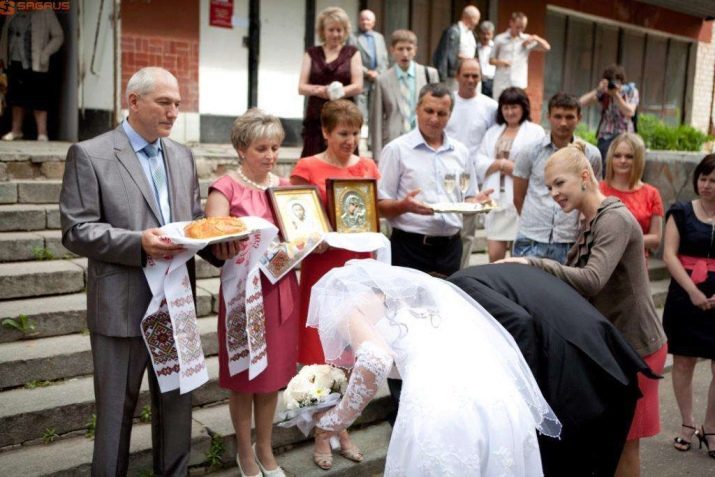
Seeing the young people to the church and the rite itself also overgrown with a web of legends and will accept.
- Children are blessed by parents with icons of the Mother of God and Savior. If, in gratitude, the young people bowed simultaneously, then the marriage will be long.
- Young people should enter the temple from the right foot.
- At the entrance to the temple, a witness to the ceremony should lay a rushnyk under the feet of a young person who steps on it first, will be considered the head of the family.
- The couple are given wedding candles, which after the rite, like a rushnyk, need to be picked up. Candles can be lit during illness.
- During the ceremony, when young people wear crowns, they do not look into each other's eyes. The gaze should be directed at the priest conducting the wedding ceremony.
- If after the wedding, rain pours from the sky, a rainbow comes out, this will mean a long life together in joy and harmony.
- After the ceremony, it is necessary to return to another road, and not the one along which the young went to church.
- Crowns, contrary to popular belief, should be worn on the heads of the couple. Otherwise, such a church marriage is not valid.
- If the candles crack, then the marriage will be unstable.
- Whose candle burns longer during the ceremony, that spouse will live longer.
- The rain that came during the procession promises the imminent wealth of the young.
- In Russia there was such a belief that before going to bed, wedding rings together with wine were dropped into the marriage cups. Only after drinking the cup was intimacy possible.
- After the wedding ceremony, you need to look with your spouse in one mirror. After that, the marriage will be happy.
Now, due to the fact that weddings are often celebrated with a wedding celebration, young people after a wedding and a wedding ceremony go to ride, take pictures in parks and squares. But this is believed to be wrong. After the wedding, you need to go home so as not to lose the grace and happiness that they have found in the church. On a walk, the bride can catch an unkind look from passers-by, who are unhappy, often young or both spouses can jinx, and therefore if it is impossible to go straight to parents, it is worth taking care of protection from the evil eye and bad thoughts.
After weddings, young people often make monetary donations. There is also a sign to give a ritual gift to the church in gratitude for the sacrament. A traditional gift is fresh bread in a snow-white cloth or towel.
About the essence of the wedding rite, see the next video.
